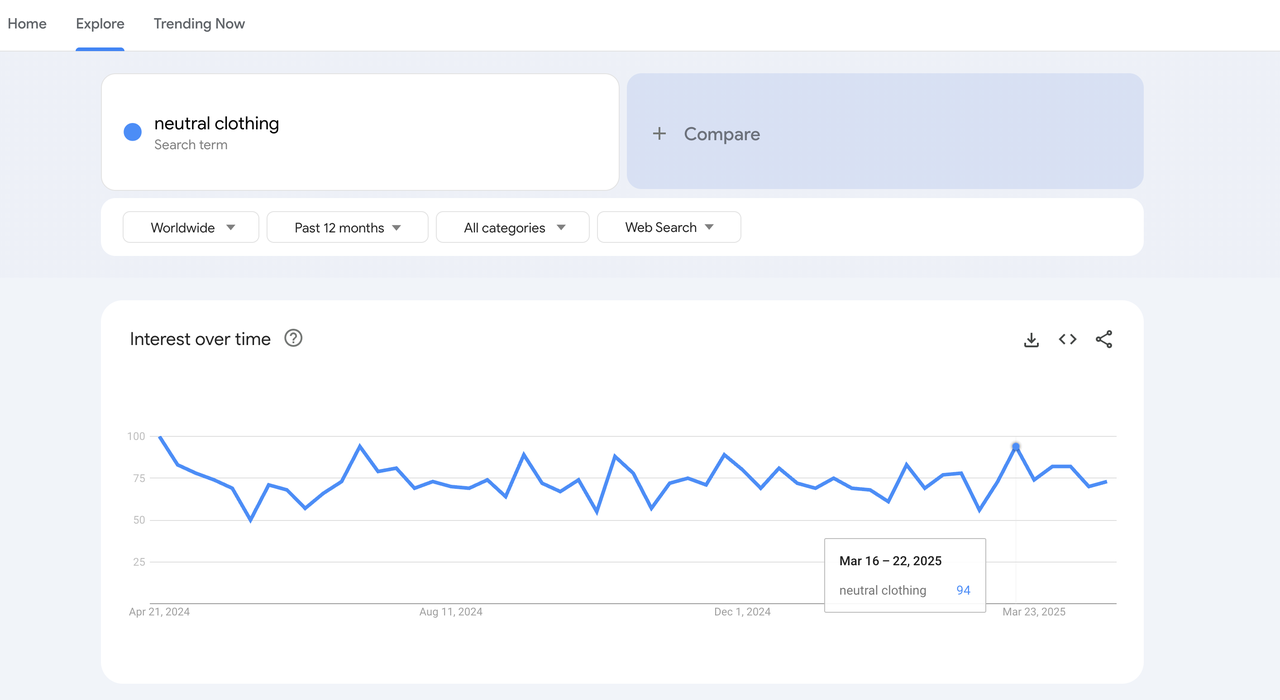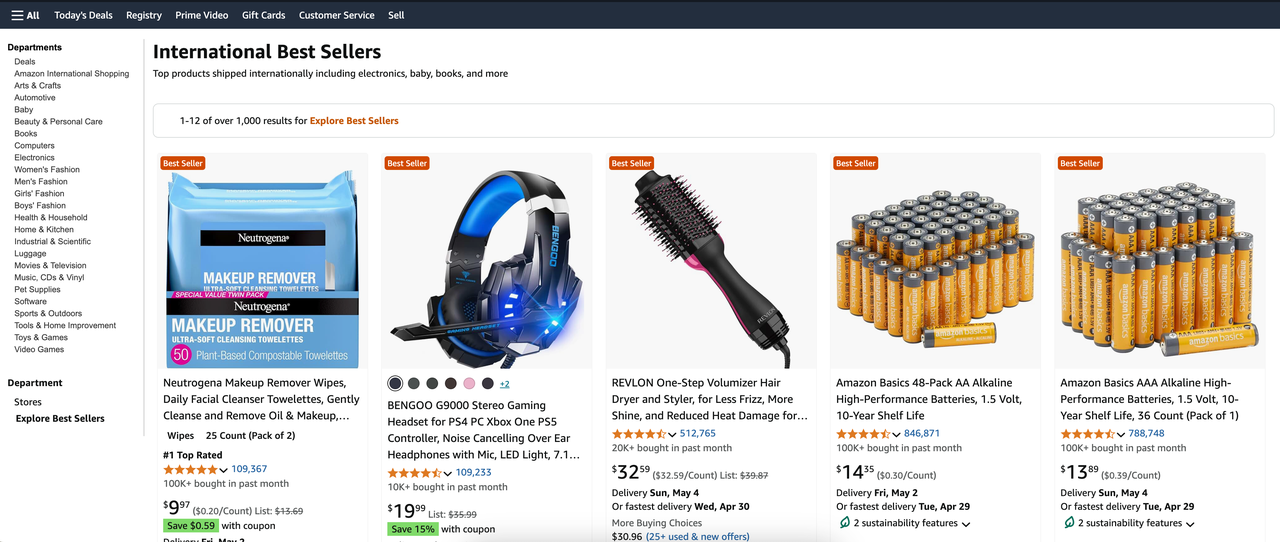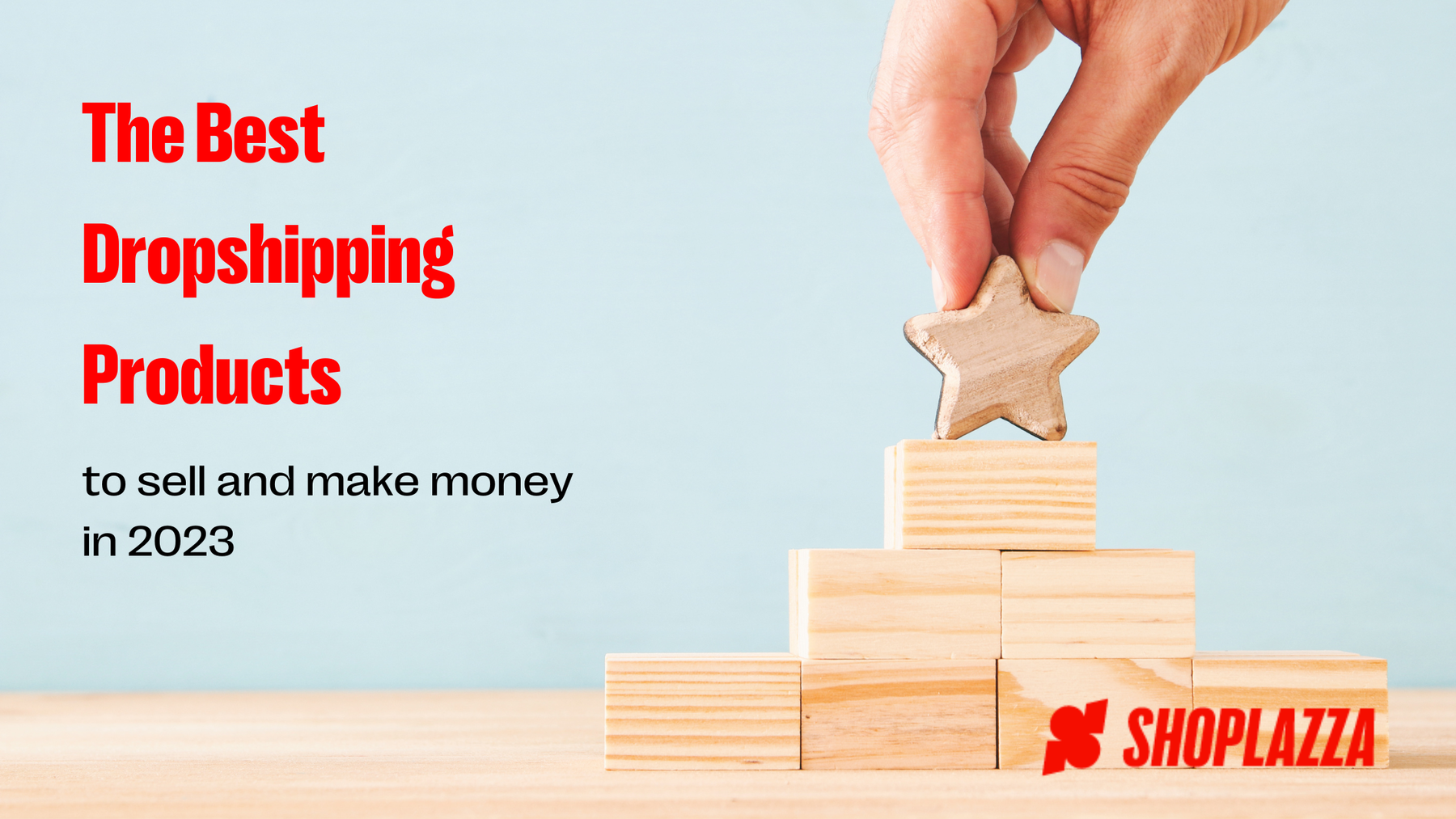At its core, dropshipping is a business model where you can sell products online without investing and managing any physical inventory yourself, as you only purchase products after a customer has placed an order. It might look simple, right? Not exactly, it may come with its own set of challenges. For instance, 84% of online sellers encounter pitfalls when choosing reliable suppliers, and 63% struggle with effective advertising. So, for better operation, this blog post will delve into some of the most common dropshipping problems and solutions to set your business up for success.
10 Dropshipping problems and solutions you can't avoid

Running a dropshipping business isn’t always smooth sailing. Below are 10 common problems you’ll likely face, along with practical solutions to keep your store on track.
Supplier relationship pitfalls
Many newcomers lack the experience to differentiate between reliable and unreliable suppliers. With the wrong one, numerous issues may occur, including:
-
Low-quality products that disappoint customers
-
Victim of fraudulent operations
The sheer volume of potential suppliers can be overwhelming, making it difficult for beginners to discern who will be a dependable partner for their business. But here are some solutions for supplier research:
-
Utilize reputable supplier directories for vetting
-
Examine supplier reviews and ratings from other users to gain insights into their reliability and past performance
-
Review their clear and fair policies regarding returns, quality control, and communication
-
Order samples to personally evaluate the items before listing them in your store
-
Reach out with inquiries or place test orders to gauge their communication skills and responsiveness
Long delivery times
In the dropshipping model, since you rely on third-party suppliers to ship products directly to your customers, delivery times can sometimes be longer than traditional e-commerce, where the seller manages their inventory and shipping. Therefore, some beginners might make the mistake of promising unrealistically short delivery times in an attempt to attract customers, only to:
-
Cancelled orders
-
Receive complaints that damage their credibility
-
Lead to shipping delays that result in negative feedback
In fact, several factors can contribute to these extended shipping times, including:
-
The supplier's processing time
-
The distance the product needs to travel
-
Potential delays at customs if the supplier is located overseas
For faster shipping, here are some strategies to manage shipping expectations:
-
Check suppliers' shipping terms
-
Prioritize local suppliers
-
Opt for suppliers with warehouses near your target market
-
Clearly display estimated delivery times on product pages and during the checkout process
-
Offer shipping options if possible, including expedited services for an additional fee
-
Keep customers in the loop with shipping tools like AfterShip Shipment Tracking
Read more: Guide to Set up AfterShip Shipment Tracking
Product research and niche errors
Skipping proper research is a big dropshipping mistake. If you don’t study niche market trends or customer likes, you might sell items no one wants, even at a lower cost. What you should do is use numbers and data to test your ideas, instead of guessing.
Primarily, you may think about how much money your products can make and check your profit margins carefully to avoid losing money.
Then, you can use some top free product research tools like Google Trends and Amazon Best Sellers to help you find popular items. For instance, Google Trends lets you track product demand over time in various regions and cities, giving you a clear picture of its popularity.

While Amazon Best Sellers helps you understand what customers are actively buying and what top-selling items match your niche. In this way, you can gain insights into customer preferences, seasonal trends, and emerging demands. This allows you to make data-driven decisions rather than relying on assumptions.

Overselling product variety
Selling too many products might seem like a good idea, but it often backfires. A broad range can confuse customers, dilute your marketing message, and make your store feel cluttered. Besides, it also shows you don’t fully understand your target audience or what they truly want.
These common mistakes can quietly drain your time, money, and energy. The good news? Each one has a clear fix. Here’s how to steer your dropshipping business in the right direction:
-
Focus on one niche at a time
-
Use data before listing any product (refer to the research method above)
-
Keep your product range clear and simple
-
Know your audience inside and out through social media like TikTok, Facebook and Instagram, and various forums
Poor customer service quality
Poor customer service can negatively impact your dropshipping business in several ways:
-
Increased customer churn
-
Negative reviews and bad online ratings
-
Reduced customer loyalty
-
Lower sales
-
Strain on resources as handling complaints takes time and costs money
To address these issues and improve customer service quality, consider implementing the following solutions:
-
Use automation tools to answer common questions quickly
-
Offer email and live chat for customers to contact you
-
Tackle complaints and feedback within 24 hours as soon as possible

Inventory management blunders
Since you don’t hold stock in dropshipping, you depend on suppliers for updates. This can cause overselling or late deliveries. Once you list an out-of-stock item, it leads to canceled orders and unhappy customers.
To fix this, you can:
-
Use software to update stock and track orders automatically
-
Set alerts for low-stock items to avoid running out
-
Work with suppliers who give real-time updates on stock levels
-
Check your sourcing process often to find ways to improve
Fortunately, Shoplazza also supports inventory management. If you build your online store here, you can manage the inventory for all products at different locations or individual product inventory at each location. Well, different puzzles need different fixes, right?

Lack of brand awareness
Are you still selling similar products from the same pool of suppliers? It may be the inherent branding puzzle in dropshipping. Without a distinct brand, your store might simply blend in with countless others offering the same items.
With a strong brand, you may:
-
Create customer loyalty
-
Justify your pricing
-
Foster trust and recognition with your target audience
However, it is often easier said than done. To help you overcome this challenge and set up branded shipping, it is suggested to:
-
Build a professional website that reflects your brand's personality and values
-
Go beyond the generic descriptions and create compelling content
-
Use quality images and even videos to showcase your products
-
Provide personalized support to your customers
-
Consider branded packaging if feasible, including packing slips, thank-you notes, or custom inserts
-
Focus on a niche with tailored products and messaging
Inefficient marketing strategies
Bad marketing can hurt your sales. But how do you know what poor marketing strategies are? Typically, they include:
-
Unclear cost, like shipping cost, product cost, and additional fees
-
Poor product guidance across key touchpoints
-
Ineffective landing pages, like directing high-intent shoppers to generic pages instead of targeted product pages
To fix these issues, you may launch marketing campaigns and methods. First, data-driven marketing. If you have an e-commerce store, leveraging data analysis on platforms like Shoplazza can provide you with valuable insights into customer behavior. You can analyze customer shopping habits and seasonal trends to tailor your campaigns for different festivals and target audiences.

Second, local SEO optimization. You may optimize your product pages with relevant keywords and ensure your content answers your customers' pain points. Or, you may also write detailed blog posts about how your products solve common problems or enhance customers' lives. Also, don't forget to update your meta descriptions, titles, and URLs to improve your search engine ranking. Once done, you may use SEO Optimizer to check whether it works.
Read more: SEO Optimizer Guide

Third, landing page optimization. You may test different layouts, headlines, and CTAs (calls to action) to ensure they align with customer needs. You may also want to conduct A/B testing to see what works best in converting visitors into paying customers.
Returns and refunds mismanagement
In dropshipping, returns and refunds are inevitable. However, mishandling them can lead to customer frustration, negative reviews, and a damaged reputation. To manage them effectively, you should understand the reasons behind them:
-
Product doesn’t match description
-
Damaged or defective items
-
Incorrect size or color received
-
Shipping delays or lost items
-
Change of mind after purchase
-
Poor quality or unmet expectations
Solutions to tackle these issues:
-
Accurate descriptions and high-quality images to prevent mismatched expectations
-
Inspect products before shipping to reduce defects
-
Provides clear size guides and color details
-
Work with reliable shipping partners for timely deliveries and tracking
-
Collaborate with third-party logistics (3PL) providers
-
Clear return policies
-
Address concerns before they lead to returns
Low profit margins
Due to the low barrier to entry and the resulting intense competition in the dropshipping market, profit margins can often be relatively thin compared to traditional retail models, where businesses have more control over their sourcing and pricing. To achieve substantial profits in dropshipping, beginners often need to focus on selling a significant volume of products.
To boost your bottom line, you may:
-
Identify underserved markets or high-ticket dropshipping items that can lead to better pricing opportunities
-
Analyze competitor pricing and market demand to set competitive prices
-
Consider factors like perceived value and your brand positioning
-
Think about ways to increase the average order value by product bundles, discounts on related items, or tiered pricing structures
-
Invest in branding efforts
Best Practices to Prevent Dropshipping Challenges

To avoid getting stuck in the same traps many beginners face, it’s smart to follow proven practices that keep your dropshipping business smooth, focused, and profitable.
Don't give up early
Many dropshippers quit within the first few months due to initial hurdles like low sales or supplier issues. Success often requires patience and persistence. So, you need to treat early challenges as learning opportunities. Test different products, marketing strategies, and suppliers. Then analyze what doesn't work and adapt your approach. Remember, don't expect instant success; focus on consistent effort and gradual improvement.
Keep learning and stay informed
The e-commerce landscape changes rapidly. You may continuously educate yourself on market trends, consumer behaviour shifts, and emerging technologies through industry blogs, forums, and competitor analysis. For instance, you may regularly monitor key performance indicators (KPIs) like Conversion Rate, Average Order Value (AOV), Return on Ad Spend (ROAS), and Customer Acquisition Cost (CAC) to understand what drives results. Staying informed allows you to adapt quickly, capitalize on new opportunities, optimize marketing campaigns, and maintain a competitive edge, ensuring customer satisfaction and business relevance.
Treat dropshipping as a growing business
Approach dropshipping with a professional mindset, not just a hobby. It is better to plan for scalability from the start. As projected market growth (25.1% CAGR) indicates potential, reinvest profits into improving operations, marketing, and customer experience.
Growth also needs checking performance. Don't forget to look at things like delivery times and product quality to see if suppliers are reliable.
Is dropshipping still worth it?
Yes, dropshipping is still worth it—and looking ahead to 2025, the outlook is more promising than ever. According to multiple independent reports, the global dropshipping market is set to grow steadily and significantly. Take a look at this table on Global Dropshipping Market Size and Growth Projections (2024–2025):
| Source | Market Size 2024 (USD Billion) |
Market Size 2025 (USD Billion) |
CAGR (%) |
| Straits Research | 366.76 | 470.92 | 28.43 |
| Oberlo | 351.8 | 435 | 23.6 |
| Research and Markets | 272.97 | 332.27 | 21.7 |
| Grandview Research | 365.67 | 464.44 | 22 |
| Precedence Research | 351.81 | 434.98 | 22.02 |
(The variations in exact figures may result from the dynamic nature of the market and the different methodologies used for analysis.)
This consistent upward trend isn’t just a fluke. It reflects real-world shifts—rising disposable incomes, the explosion of mobile shopping, and growing consumer comfort with buying online. These factors are driving strong demand across different regions, showing that the dropshipping model continues to evolve, expand, and offer real potential for newcomers and seasoned sellers alike.
The Good News: Shoplazza's solutions are here to help!

These challenges might seem tough, but they’re totally manageable. With the prompt recognition of dropshipping problems and solutions, your chances of success go way up. That’s where Shoplazza comes in—it’s packed with everything you need, from brand building and dropshipping supplier selection to inventory management and marketing. It’s built to help you dodge the usual dropshipping headaches. Still unsure? Give it a shot with a 7-day free trial—no pressure.
FAQ
What is the biggest problem with dropshipping?
The biggest problem is poor product research. Without understanding market demand and customer preferences, it’s easy to sell products that don’t sell, leading to wasted time and money.
Where do most dropshippers fail?
Most dropshippers fail due to a lack of proper planning, marketing, and choosing unreliable suppliers, which leads to poor customer satisfaction and low profits.
What can go wrong with dropshipping?
Dropshipping can face issues like inventory mismanagement, long shipping times, poor product quality, unreliable suppliers, and intense competition, which can all affect customer satisfaction.
Is it too late to start dropshipping?
It’s not too late to start dropshipping. With the right approach, niche, and effective marketing, dropshipping remains a viable business model, especially as global e-commerce continues to grow.



